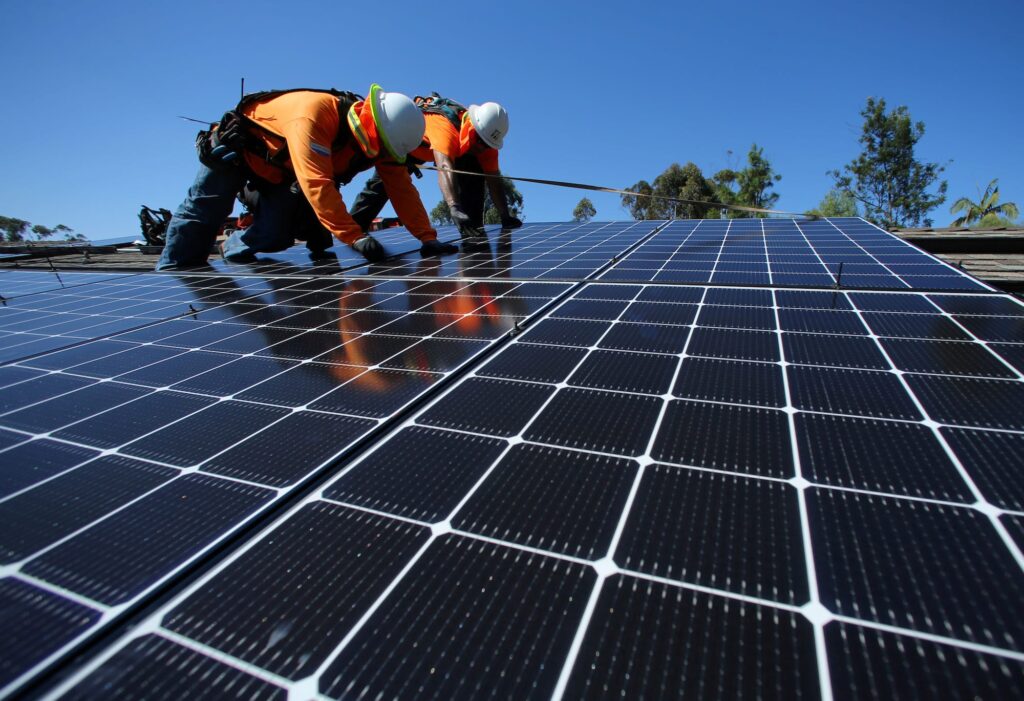- Only 1 in 8 workers globally have the green skills companies are looking for, according to LinkedIn.
- The gap is most acute among women, highlighting an emerging “green ceiling.”
- Employers will have to rethink how they hire, LinkedIn told Business Insider.
The green transition is widely expected to create millions of new jobs around the world.
The trouble is, there aren’t enough workers with the right skills, a recent LinkedIn analysis of user data found.
“We are nowhere close to where we need to be,” Efrem Bycer, senior lead manager of public policy and economic graph at LinkedIn, told Business Insider. “We need to accelerate that green talent development, not just because of the planetary imperative, but there’s also a whole bunch of economic opportunity that we’re leaving on the table.”
Only 1 in 8 workers globally have the green skills companies are looking for — such as measuring carbon emissions, building solar, wind, and electric vehicle projects, preventing waste, and protecting water quality, LinkedIn found. The gap is most acute among women: 9 in 10 of whom don’t have a single green skill or work experience.
LinkedIn analyzed data from the more than 1 billion people and 65 million companies using its site between January 2016 and August 2023. The company classified several hundred skills as “green” and studied changes across those profiles during that time period.
Bycer noted that workers with green skills have better job prospects. This year, the green hiring rate was 29% higher than the overall market. But it can be hard to break into the field because many jobs require prior experience. That means employers will have to rethink how they hire to keep pace with demand, LinkedIn's analysis found.
Employers should be connecting their climate goals to the workforce, and then investing in "precise talent development," Bycer said. And even if someone doesn't have a green title in their current job, their skills could transfer.
People who've worked in project management, sales, or customer support may be a good fit for jobs in solar consulting, Bycer said. At LinkedIn, they need experts in procurement and supply chain management to help reduce their carbon footprint. Knowing how to measure and track a company's carbon footprint is one of the fastest growing skills in the US.
Bycer said the fact that the current green talent pool is predominantly men — or 66% — is a big problem that highlights an emerging "green ceiling."
One way to close that barrier in the trades, such as construction and electrical work, is targeted outreach for apprenticeship programs. Attaching wraparound services like childcare to those programs would help remove a barrier for women, Byzer said.
There are some encouraging signs. Women have been joining the green talent pool, defined as having one green skill or one job experience, at a higher rate than men. The pace just isn't fast enough to close the gap, LinkenIn's analysis showed.
Women are also 64% more likely to have skills related to sustainability education and about 20% more likely to have skills related to sustainable development and the circular economy, LinkedIn found. Women working in the oil, gas, and mining sectors have more green skills than men.
Bycer said another bright spot is how both climate and labor experts within governments and companies are talking about the problem.
"I hear a lot more climate experts talking about jobs, and a lot more workforce experts talking about climate," Bycer said. "Those groups don't often get together."
